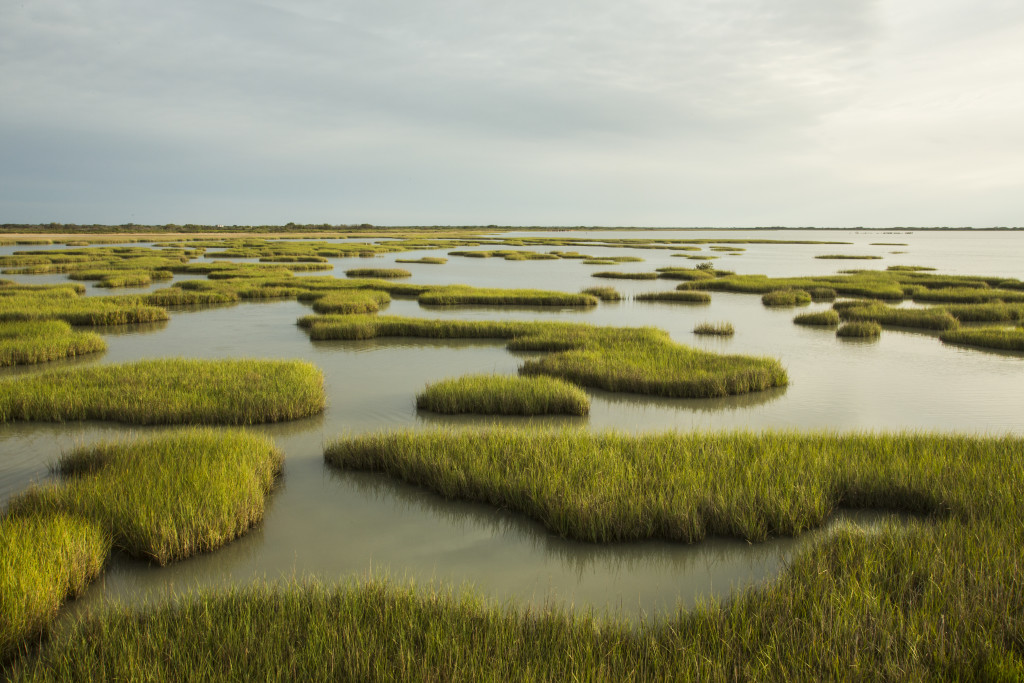Fisheries, Coastal Wetlands, and Sea Level Rise
Projected sea level rise may have serious consequences for recreational and commercial fishing and shrimping, with potential to impact the coastal economies. Why? Because coastal wetlands and salt marshes have very narrow water depth requirements; any inundation could shift these habitats to non-vegetated open water. So how does coastal wetland loss relate to commercial fishing?
Coastal, non-deltaic wetlands are estuarine wetlands and salt marshes subject to tidal flow along the U.S. Gulf Coast. Coastal salt marshes constitute essential fish habitat. Over 90 percent of all commercial and recreational fish and shrimp species spend some part of their life cycle in a coastal salt marsh. Loss of these wetlands would have serious and substantial impacts on the Gulf Coast fisheries industry.
Additionally, these wetlands also play an indirect, but critical role in maintaining water quality of coastal estuaries and open water. Wetlands clean pollutants and sediment from urban runoff before it enters the bays and oceans. This function is important to maintaining the health of coastal fisheries and the overall aquatic and biologic integrity of coastal waters.
Read more: The Value of Coastal Fisheries and Wetlands
Won’t the Wetlands Just Migrate with Sea Level Change?
Where the surface elevation (topography) rises very gently from the sea, salt marsh wetlands will be able to migrate landward with sea level rise (SLR). In many areas, however, topography rises too abruptly from the sea, and salt marshes will be lost until the sea level rises enough to inundate higher elevations. This process could result in wetland loss in abruptly changing topographies for centuries. In addition, many areas just inland from coastal salt marshes have been developed and protected with bulkheads or seawalls, such that wetlands are impeded from migrating inland.
Read more: Climate Change Impacts on Tidal Wetlands
Policy Framework for Coastal Wetland Adaptation to Sea Level Rise
The purpose of this section of the website is to review legal and policy frameworks that might hinder or enable adaptation to the next 100 or so years of climate change, in terms of impacts on coastal estuarine wetlands. Existing wetlands receive some protection from development under a variety of federal, state, and local laws. For example, coastal salt marshes are legally protected “waters of the U.S.” under the Clean Water Act. These wetlands cannot be filled without obtaining a permit from the U.S. Army Corps of Engineers and replacing essential wetlands functions through some form of mitigation. The Magnuson-Stevens Act, the primary statute governing U.S. fisheries resources, requires protection of essential fish habitat.
There are no explicit provisions, however, to protect future wetlands on lands that may be inundated under SLR.
Read more: Policy Framework for Coastal Wetlands
Management Options for Adapting Coastal Wetlands Rising Sea Levels
Given the current legal framework, what options can be taken to avoid net wetland loss with sea level rise?
A few existing policy instruments could be used to insure the availability of inundatable lands for the formation of new wetlands. The most promising and perhaps most easily applicable legal framework for wetlands protection would be the adoption of a mechanism similar to the rolling easement provisions of the Texas Open Beaches Act.
States and NGOs could bring pressure on the federal government to include preservation of inundatable lands as acceptable mitigation for some wetland filling. Land trusts and other preservation groups should make inundatable lands priority preservation areas.
Considerable progress has been made in constructing salt marsh wetlands where these wetlands have been lost to subsidence and erosion. Whether or not enough constructed wetlands could be built to sustain coastal fisheries under SLR remains to be seen, but there is little doubt that constructed wetlands could play a significant role in some critical areas.
Read More: Management Options for Wetlands and Sea Level Rise
Read More: Recommendations for Mitigating Loss of Coastal Wetlands Related to Climate Change




